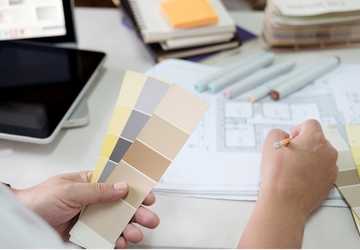How to Stage Your Home for a Quick Sale
Selling your home swiftly doesn't require a degree in design or a hefty budget. With practicality and a dash of strategy, you can stage your home to appeal to potential buyers. This guide explores making your home stand out in the market without using complexity. So, let's dive into the art of staging your home, making the process approachable and efficient.
Declutter and Depersonalize:
The first and crucial step to make your home buyer-friendly is to declutter. It's time to channel your inner minimalist and clear out the excess accumulated over the years. Potential buyers want to envision their own lives in your space, so pack away family photos, quirky collections, and that neon sign you thought was cool in college.
Aim for a clean, neutral look. A sparse, decluttered space makes rooms look larger and allows buyers to imagine their furniture and decor. Remember, less is more when selling a house; this step sets the foundation for a visually appealing home.
Maximize Natural Light:
Light can be a game-changer in the world of home staging. Pull back those heavy curtains and let the sunshine flood in. Natural light not only brightens up the space but also makes it feel more inviting. If you have dark corners, strategically placed mirrors can bounce light around the room, giving it a more open and airy feel.
Ensure all your light fixtures are working, and consider using higher-wattage bulbs to brighten up dim areas. A well-lit home feels warm and welcoming, speeding up the selling process. It's amazing how a well-lit room can transform the overall feel of a space.
Neutral Colors Rule:

While your love for bold, bright colors may be undeniable, it might not be everyone's cup of tea. Choose neutral colors like beige, gray, or white when staging your home. This creates a blank canvas, allowing potential buyers to visualize their color preferences and furniture in the space.
Neutral colors also make rooms appear larger and more cohesive. If repainting your entire home seems like a Herculean task, focus on the main living areas and bedrooms. A fresh coat of paint goes a long way in making your home look well-maintained and move-in ready. A neutral color palette is a backdrop for potential buyers to project their style onto the space.
Focus on Curb Appeal:
The first impression is crucial, and that starts with the exterior of your home. Spruce up your curb appeal to draw in potential buyers when they look at your property. Trim the bushes, mow the lawn, and add a pop of color with some potted plants or flowers.
A welcoming entrance can set the tone for the entire viewing. Consider repainting the front door or investing in a new welcome mat. Small touches can make a big difference and create a positive first impression that lingers in the minds of potential buyers. Curb appeal is not just about aesthetics; it's about making a potential buyer excited to see what's inside.
Create Inviting Spaces:
Help potential buyers see the full potential of your home by creating inviting spaces. Rearrange furniture to highlight the natural flow of each room and showcase its purpose. For example, turn that awkward corner into a cozy reading nook or transform the unused dining room into a home office space.
Pay attention to the small details, like fresh flowers in the living room or a well-set dining table. These subtle touches add warmth and personality to your home, making it more memorable for potential buyers. Remember, you're not just selling a house but a lifestyle. The effort put into creating inviting spaces pays off in leaving a lasting impression on potential buyers, making them feel at home even before they move in.
Highlight Functional Spaces:
Potential buyers often struggle to visualize how they would use the available space in a home. Help them out by showcasing functional spaces. If you have a spare room that's become a dumping ground, transform it into a guest bedroom or a home office. Clearly defining the purpose of each room makes it easier for buyers to picture themselves living there.
Consider adding multi-functional furniture, like a sofa bed or a foldable desk, to demonstrate the versatility of the space. By highlighting functional areas, you add value to your home, making it more appealing to a wider range of buyers with varied lifestyle needs.
Tackle Minor Repairs:
It's easy to overlook those small repairs you've been putting off, but these can significantly impact a buyer's perception of your home. Take a weekend to address minor issues like leaky faucets, squeaky doors, or chipped paint. These seemingly trivial problems can make you feel your home could be better maintained.

Pay attention to both the interior and exterior. Fix any loose tiles, patch up cracks in the walls, and ensure all appliances are in good working order. A home that appears well-cared-for signals to potential buyers that they won't be inheriting a laundry list of repairs, making it more likely for them to commit to the purchase.
Update Hardware and Fixtures:
It's incredible how swapping out outdated hardware and fixtures can breathe new life into your home. Consider updating doorknobs, cabinet handles, faucets, and light fixtures. These seem like small details, but they can make a significant impact. Choose modern, sleek designs to give your home a contemporary and well-maintained feel without burning a hole in your wallet.
Pay special attention to the kitchen and bathroom, as these areas are often deal-breakers for potential buyers. New hardware can create a cohesive look and convey a sense of care and attention to detail.
Conclusion:
In conclusion, staging your home for a quick sale can be a manageable task. By focusing on decluttering, maximizing natural light, using neutral colors, enhancing curb appeal, and creating inviting spaces, you can make your home irresistible to potential buyers. Keep it simple: let your home's natural charm shine through, and you'll be handing over those keys sooner than you think. Happy selling!